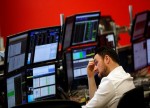
- All Instrument Types
- Indices
- Equities
- ETFs
- Funds
- Commodities
- Currencies
- Crypto
- Bonds
- Certificates
Please try another search

Clean-Tech Is the New Frontier for US Venture Capital Investment, Says Boundary Holding's Rajat Khare
How US clean energy impacts the venture capital sector and drives sustainable innovation amid global challenges.

The venture capital (VC) sector stands out as an opportunity for clean tech. Traditionally, Europe has been a hub for climate-sensitive investments, but the US is now emerging as a key player. The US clean energy sector, backed by policies like the 2020 Inflation Reduction Act (IRA), is attracting record levels of VC funding. This influx of capital forces investors to assess the opportunities and risks of this market.
The US Emerges as a Clean-Tech Leader
In 2023, Europe’s venture capital funding declined due to various factors, including political instability and economic upheaval. As a result, investors began reassessing their strategies. Rajat Khare, founder and CEO of Boundary Holding, a Luxembourg-based VC firm specializing in deep tech startups, observed this trend. According to Khare, Europe’s investment strategy is now rivaled by the growing opportunities in the US clean-tech sector.
The US is the largest recipient of clean-tech venture capital globally, surpassing Europe and China. The IRA has spurred this shift by allocating $370 billion toward climate and clean energy projects. The IRA’s emphasis on electric vehicle EV production, battery manufacturing, and grain hydrogen infrastructure has stimulated investor interest.
Obstacles Facing Clean-Tech
The US leads in capital inflows. However, the rise of US clean-tech investments has its challenges. The worldwide clean-tech market is highly competitive and accounts for less than 50% of the global deal count. This gap is widening as international markets, particularly in Europe and Asia, make advances in green technologies.
Investors must also contend with geopolitical risks, economic fluctuations, and the US’s complex clean energy regulations. Rising interest rates, trade tensions, and supply chain disruptions complicate investments.
Additionally, clean-tech startups face challenges scaling their innovations. Many early-stage companies lack the capital to bring their products to the market. Despite these obstacles, the long-term growth potential of clean energy remains attractive to seasoned investors.
How US Clean-Tech Thrives
The US clean energy sector has proven resilient in the face of adversity. During the COVID-19 pandemic and geopolitical instability, US clean energy investments grew. The IRA’s funding provisions accelerated this growth. The legislation offered tax incentives and grants to projects promising to reduce carbon emissions and improve energy efficiency.
This policy spiked the production of renewable energy technologies. For instance, the electric vehicle market has seen advancements in battery storage technologies, reducing the overall cost of EVs while extending their range. Simultaneously, grain hydrogen projects gained traction as a viable alternative to traditional fossil fuels.
A Word of Caution for Investors
The clean-tech sector is set for greater growth with the race to achieve net-zero carbon goals. However, Khare emphasizes taking a strategic approach to clean-tech investments. He cautions against over-exuberance and encourages investors to stay informed of market dynamics. While the US offers ample opportunities, the global nature of the clean-tech sector requires an understanding of domestic and international markets.
A Positive Investment Outlook
The rise of clean-tech as a dominant force in US venture capital markets is a major shift in the investment sector. Clean energy projects attract unprecedented funding due to policy support driven by the urgency of climate change.
However, investors must consider the risks and rewards associated with this growing sector. As the US continues to lead clean-tech investments, the future holds vast potential for innovation, sustainability, and financial returns.




